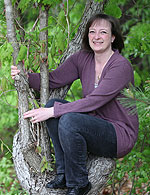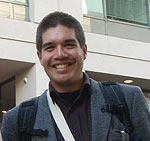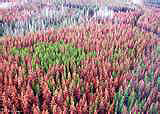Clean Energy from Landfills
Posted on May 11th, 2011 - 3:00 PMBy John Martin
When Mayor Bloomberg released the latest version of PlaNYC last month, the idea that got most of my attention was his proposal to turn the city’s landfills into electricity-producing solar plants. Although full implementation is still years away, this initiative could be a win-win for all New Yorkers.
We live in a crowded town. With an additional 1 million people expected to move here over the coming decades, every last inch will have to be put to productive use. While our 3,000 acres of shuttered landfills aren’t suitable for residential development, there are other ways to make good use of this land — fields of photovoltaic cells being one of them.
Under the city’s proposal, 250 of these acres would be leased to a private operator, who would install and run the plants. Although pricey at first, such an arrangement would be attractive to potential developers, since it would likely take just 10 years to recoup construction costs. If all goes as planned, the project could be enough to power as many as 50,000 homes.
One major advantage of this initiative is how clean solar energy is. Increased use of solar power would allow the city to reduce its dependence on its dirtiest plants, improving our air quality. Another advantage of this plan is that it reduces the need for transmission upgrades. The city’s closed landfills are close enough to residential areas that the need for new transmission lines would be minimal.
Finally, solar energy would provide electricity to New Yorkers when we need it most — during the hot, sunny days of summer. Having lived through the 2003 blackout and the July 2006 Queens power outage, a plan to help keep the air conditioners running through the summer is a plan that gets my support.
About the author: John Martin is a native New Yorker with a background in law and politics. He became an EPA press officer in 2010.
Editor’s Note: The opinions expressed in Greenversations are those of the author. They do not reflect EPA policy, endorsement, or action, and EPA does not verify the accuracy or science of the contents of the blog.

 Each week we write about the science behind environmental protection.
Each week we write about the science behind environmental protection.  To understand how the
To understand how the 
 One day in March 2010, as I dashed out of the office to grab lunch before a conference call, I was shocked when I witnessed a parked vehicle reverse into a pedestrian crossing, missing a family with a small child by millimeters and milliseconds. The driver was equally shocked when I let him know how close they were to tragedy. I went on with my day’s work, but I couldn’t forget about it. There was no reason for the loading zone stripe on the sidewalk there to extend all the way to the pedestrian crossing, creating a deadly hazard.
One day in March 2010, as I dashed out of the office to grab lunch before a conference call, I was shocked when I witnessed a parked vehicle reverse into a pedestrian crossing, missing a family with a small child by millimeters and milliseconds. The driver was equally shocked when I let him know how close they were to tragedy. I went on with my day’s work, but I couldn’t forget about it. There was no reason for the loading zone stripe on the sidewalk there to extend all the way to the pedestrian crossing, creating a deadly hazard.
 ll take time to look around their own parts of the world, see what needs fixing, and talk with their neighbors and government to get it done.
ll take time to look around their own parts of the world, see what needs fixing, and talk with their neighbors and government to get it done.
 How do I take something that happens every year and make it special and unique and maybe just a bit exciting? We decided to encourage employees to reuse/recycle by holding a swap, which we called a swish to be more posh like our friends across the pond.
How do I take something that happens every year and make it special and unique and maybe just a bit exciting? We decided to encourage employees to reuse/recycle by holding a swap, which we called a swish to be more posh like our friends across the pond. 
 By Molly Hooven
By Molly Hooven By Cynthia Giles
By Cynthia Giles At the Boston Public Health Commission, we work collaboratively within the community to address these triggers, teach residents how to better manage their asthma and their environment, and support residents when their indoor environment is making them sick and it is out of their control. We conduct over 100 direct service home visits for families with asthma each year to help people create healthier indoor environments within their homes.
At the Boston Public Health Commission, we work collaboratively within the community to address these triggers, teach residents how to better manage their asthma and their environment, and support residents when their indoor environment is making them sick and it is out of their control. We conduct over 100 direct service home visits for families with asthma each year to help people create healthier indoor environments within their homes.